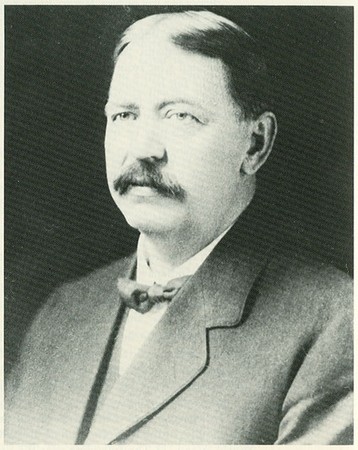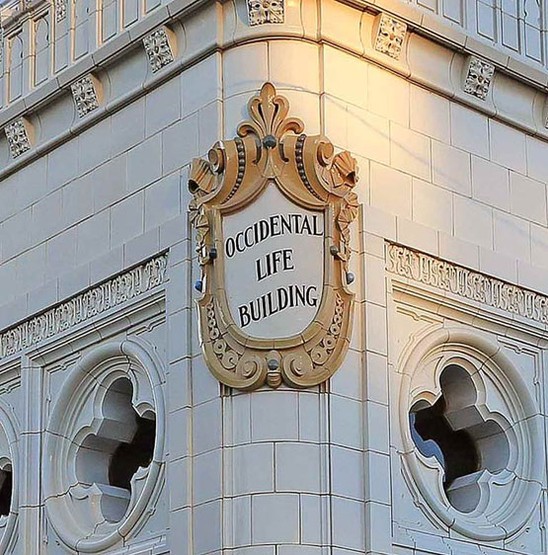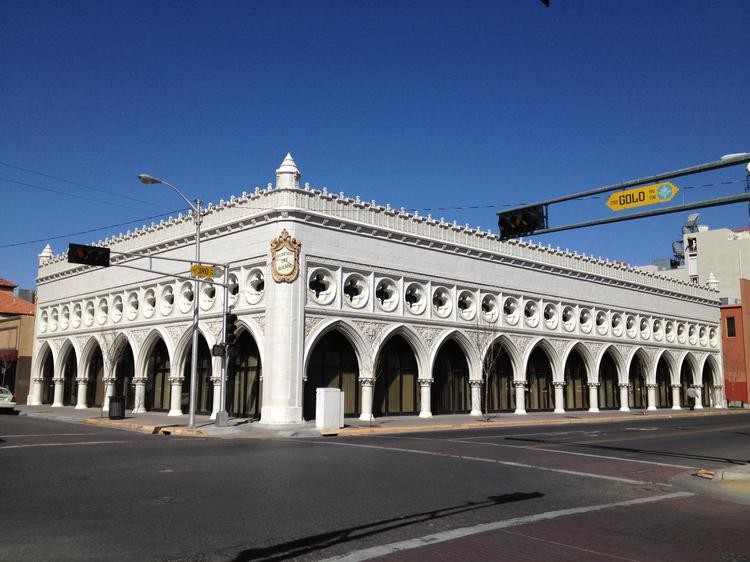Occidental Life Building, Albuquerque
Introduction
Text-to-speech Audio
Images
Henry C. Trost, architect of Occidental

Close up of the building's sign

Occidental Life Building as it looks today

Backstory and Context
Text-to-speech Audio
The Occidental Life Building features a Venetian Gothic Revival architectural style which is highly unusual for New Mexico, and has been described by the Albuquerque Landmarks and Urban Conservation Commission as "unique in the country." The Baum Building in Oklahoma City, built in 1909, employed similar architectural features but was demolished in the early 1970s.
The building's most significant feature is the white terra cotta facade, which wraps around the south and east sides of the building. The facade was modeled after that of the Doge's Palace in Venice, with arcades of pointed Venetian Gothic arches, quatrefoil windows, and, following the 1934 rebuilding, an ornamental frieze with a row of finials. The spandrels and capitals are decorated with elaborate floral ornamentation, and the building's rounded corners are punctuated with pointed turrets. The tile used in both the original and rebuilt portions of the exterior was manufactured by the Denver Terra-Cotta Tile Company.
Cite This Entry
Emett , Mike and Clio Admin. "Occidental Life Building, Albuquerque." Clio: Your Guide to History. July 2, 2017. Accessed August 14, 2025. https://theclio.com/entry/41482
Sources
"Properties by County" (PDF). New Mexico Department of Cultural Affairs.
Raynor, Ted (February 3, 1952). "Artistic, Unique in N.M., Occidental Building Here Brings Touch of Venice". Albuquerque Journal. NM. p. 10.
"Guards put at buildings after $150,000 fire losses". Albuquerque Journal. NM. April 26, 1933. p. 1.
Edgell, G.H., The American Architecture of Today Charles Scribner's Sons, New York. 1929

